Ask someone, “what is family?/what is the meaning of family?/what is the definition of family/what does family mean to you?” and you’re bound to get a wide range of answers. The varied responses are because of the rampant diversity among different family types. The idea of a traditional family, two parents with children, is only one of many family units. But it makes one wonder; perhaps it’s time to broaden our perspective on the concept of family life.
What Is Family?
You could say family is what you make it. Everyone has different living situations, unique stories, and life events that create one’s family. Determining what is family takes a lot more than just considering blood relations.
In many cases, a strong family bond exists among people brought together through other means. For example, you can become part of a family through marriage, adoption, or sharing a communal bond.
Sociologically, What Is A Family?

You can debate the idea of a family from a sociological standpoint for hours and hours. This is because there are so many new things that define a family.
The traditional idea of a man and woman marrying and having children to build a family has given way to more diverse family structures. Some say that the sociological view of family is any setting where people come together to raise children.
However, on another side of the debate, you can have a childless family made up of people who share a residence. But one common thread is support. The group of people support each other and look out for each other, making them a family.
The classic sociological definition of a family includes three main parts. Families share a residence, integrate their finances, and revolve around two parents with children.
However, the more modern sociological definition of a family is much broader. One suggestion is that a family is simply a group of people related by blood or marriage. Still, an even broader definition expresses one’s family as anyone you consider family, even if it’s your pets.
How Do You Define Family Structure?
Instead of defining the family structure as one set thing, it’s best to take a more comprehensive approach. Basically, family structure is simply the people that make up a family unit and how they all connect.
For example, the traditional US view of family is two married people that raise their biological children. But this view of a family is now somewhat outdated and narrow-minded.
Today, non-traditional family structures abound, making way for a whole new way to look at a family. To better understand family structure today, you need to look at all the different family types.
14 Different Types Of Family And Family Size
Everyone has their own opinion on what makes a family, but how many different types are there? Here’s a look at some of the most common family types today. Which one best describes your family?
What Is A Nuclear Family?

A nuclear family consists of two parents who are typically married and their children. It’s the family type that we still view as the traditional concept of family, although it’s no longer the primary accepted family type in the US.
However, according to census data as recent as 2016, most children still live with two parents. But those children could be biological or adopted. Either way, two parents raising children is at the core of a nuclear family.
What Is An Extended Family?
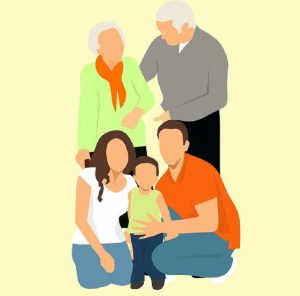
Extended families are all the people you’re related to, either by blood or marriage. Typically, it might refer to grandparents and aunts, uncles, and cousins. In some cases, several extended family members might share one residence, helping out with tasks and finances.
When an extended family lives under one roof, they share common goals and work together to support the household. For example, two adults and their children might live with their grandparents. But, it could also be a couple and their kids living with the husband’s brother’s family, etc.
The Muslim Family Culture
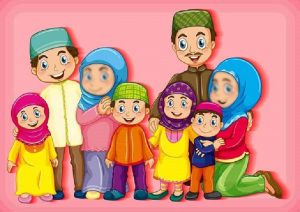
You’ll find many instances of extended families in Muslim family culture. The traditional Muslim family often features three or more generations along with strong blood ties and commitments to marriage. This extended family structure provides benefits like stability, emotional and physical support, and a solid foundation for growth.
What Is A Matrifocal Family?

You can view matrifocal families in a couple of different ways. On the one hand, it could refer to a single-parent home where the mom is raising her children. However, in another case, perhaps it’s two women raising children, with one taking on more of the mother role. In this case, the latter would make most of the decisions regarding the household.
In other cultures or scenarios, the mother is the head of the household while the father takes on a minor role regarding the kids and home. For example, the mother might get the final say when making any decisions regarding the children.
What Is A Patrifocal Family?

A patrifocal family is pretty much the opposite of a matrifocal one. The father takes on the primary role of decision-maker in regard to his home and children. However, it could also refer to a household with one father raising his kids. Or, two men raising children together and one taking on more of the father role and making most decisions.
In other cultures, a patrifocal family settles down near the husband’s family. They might even move in with the husband’s family in some cases.
What Is A Single-Parent Family?
Single-parent families are on the rise in the US, consisting of one parent raising one or more children. A person might find themselves leading a single-parent household because of divorce, the death of a spouse, or they never married.
Once upon a time, a woman having children out of wedlock or a man attempting to raise a child alone was taboo. Today, society is more accepting of the idea as social norms and moral views are ever-changing.
What Is A Blended Family?
Another family type that has become more common is the blended family. A blended family forms when two separate families merge, typically through someone marrying a person with kids from a previous marriage. In some cases, it might even be two divorced adults with children that come together to form a family.
Like single-parent families, devotees of the nuclear family might have looked down on these families in the past. But, they are much more common today and have become more of a norm in today’s world.
What Is A Monogamous Family?
A monogamous family is similar to the idea of the nuclear family. It typically refers to one man and one woman coming together and having children. Today, it could also refer to two people of the same sex marrying or having children together under common law. The primary focus is that the adults in the family only have one partner.
What Is A Polygamous Family?
On the other end of the spectrum from a monogamous family is the polygamous family. Today, with shows like Sister Wives, the concept is more out in the open but still uncommon in US culture. It’s typically when the man has multiple wives, although, in some cultures, it could be a woman with multiple husbands.
What Is A Grandparent Family?
Although not common, the grandparent family is starting to happen more in the US. This is when the grandparents alone are raising their grandchildren. This family dynamic usually occurs when the parents cannot care for the kids or aren’t around.
In some cases, the parents could be in jail, dealing with substance abuse, or financially and emotionally unable to care for their children. In other cases, the parents might have died, leaving the kids in the care of the grandparents.
What Is A Childless Family?
One of the main factors that makes a family for many people is the addition of children. But, does this mean if you don’t have kids, you don’t have a family? No.
Some couples choose not to have children or, for whatever reason, are unable to have children. On occasion, they might watch other family members’ children, like nieces and nephews. Or, they might choose to spend time with extended family members while enjoying a childless life.
In a society that still views the concept of family as including kids, these family types might get forgotten. However, it’s essential to recognize them as a family that contributes to society in other ways.
What Is A Multi-Generational Family?
Some might think this is the same as an extended family, but it specifically refers to two or more generations living under one roof. Today, you will find this more often as adults take in elderly parents to help care for them (or vice versa).
What Is An Adoptive Or Foster Family?
Adults that can’t have children of their own might choose to legally adopt a child whose own parents could not look after them. Some people have their own children and also choose to adopt to provide a home to a child in need. A foster family typically takes in a child for a short period until their parents get them back or someone adopts them.
What Is A Same-Sex Parent Family?
A same-sex family can almost fit the idea of a nuclear family — two adults living together and raising children. The difference is, instead of a man and a woman, both parents are of the same sex.
It could be two women raising one of the woman’s children from a previous marriage. It could also be the same with two men. Or, it could be two males that have a child through surrogacy or a variety of other combinations.
What Is A Modern Family?
When you hear the term modern family, you could apply it to any of the above family types. A modern family shifts and transforms along with today’s changing times. It doesn’t stay confined by past ideas of the traditional family. The modern family could be a nuclear family in which the stereotypical gender roles are reversed.
For example, the woman goes to work every day, pursuing a career, while the dad stays home with the kids. Or, it’s a family where both parents work and have a live-in nanny to help care for the kids. Or, it’s a same-sex couple raising children while working from home and home-schooling.
What Are The Socioeconomic Aspects Of The Family?
Part of being a family means you help support each other socially, emotionally, and financially. Certain family members might have the economic means to support those that cannot yet earn for themselves or are unable to. All in all, family members should provide shelter, food, and security for each other.
From a social aspect, a significant component of many families is having children, adding to the function of society as a whole. The very concept of a family can also help maintain a sense of stability within society.
But as times change, the socioeconomic responsibility of the family is changing with it. For example, in some cases, family members might not adequately support other members, leaving that role to the government. In other cases, advances in medicine and technology allow people more control over if and when they have children.
These changes are just more examples of how families have changed over the years. It also points to the possibility of even more changes in the future. Ultimately, the whole concept of family is ever-evolving and will continue to rework itself over time.
What Is Family Law?
You might consider your best friend, your cat, and even your neighbor next door who helped raise your kids like family. But there’s another component to what defines a family, and that is the legal view of family structure. Family law defines the relationships among family members from a legal standpoint.
For example, you get legally married, divorced, have legal custody of your children, legally adopt a child, etc. In some cases, non-married partners living together put legal parameters in place to grant them certain privileges typically granted to married individuals.
Family law serves to strike a balance between protecting individuals and society. Although you can consider many unrelated people like your family, the law can see it differently.
Imagine you leave your estate to your best friend in your will because you consider them your closest family. But family law allows your widowed spouse to contest your will. They have the right to do this because they were your legal family.
Or, if you leave no will at all, family law steps in again. In most cases, it grants your estate to your surviving spouse, children, grandchildren, etc.
Remembering The Importance Of Family Values
In the end, how you feel about family is a personal decision. There’s no right or wrong answer when it comes to what is family. What is important is that those you consider your family share common family values, such as moral character, kindness, social responsibility, etc.
These values are what help define you as a family. Standing by your family values also helps shape and define who you are as an individual. Ultimately, shared beliefs and values significantly contribute to what makes a family.
While the law might not consider certain people your family from a legal standpoint, there are actions you can take to put certain protections in place. When it comes down to it, if you consider someone a part of your family, then they are. It’s really as simple as that.




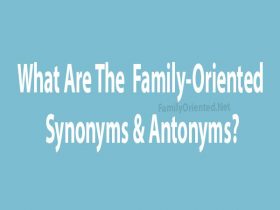
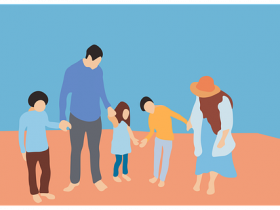




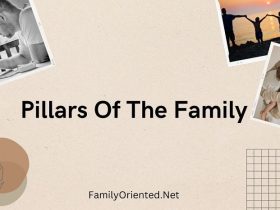


Leave a Reply
View Comments